Beach volleyball’s journey to Olympic prominence in 1996 cemented its place as a captivating and widely enjoyed sport. Icons like Team USA’s Misty May-Treanor and Kerri Walsh Jennings have become synonymous with beach volleyball, their success contributing significantly to the sport’s popularity. Beyond the athletic prowess, beach volleyball often sparks conversations about the athletes’ attire. While the sport is known for its distinctive uniforms, particularly the women’s, the choices are rooted in practicality and have evolved considerably over time.
A Look Back at Beach Volleyball Uniform History
The origins of beach volleyball deeply influence the evolution of its uniforms. Born on the sun-soaked beaches of Hawaii, Southern California, and Rio de Janeiro, the sport naturally adopted clothing suited for warm, sandy environments. For many years, beach volleyball attire mirrored swimwear, most notably bikini briefs.
April Ross, an Olympic medalist, highlighted this connection in a 2021 interview with the Associated Press: “Beach volleyball was a sport that was developed in Hawaii and Southern California and on the beaches of Rio. You play, and it’s hot, and then you go and jump in the water.”
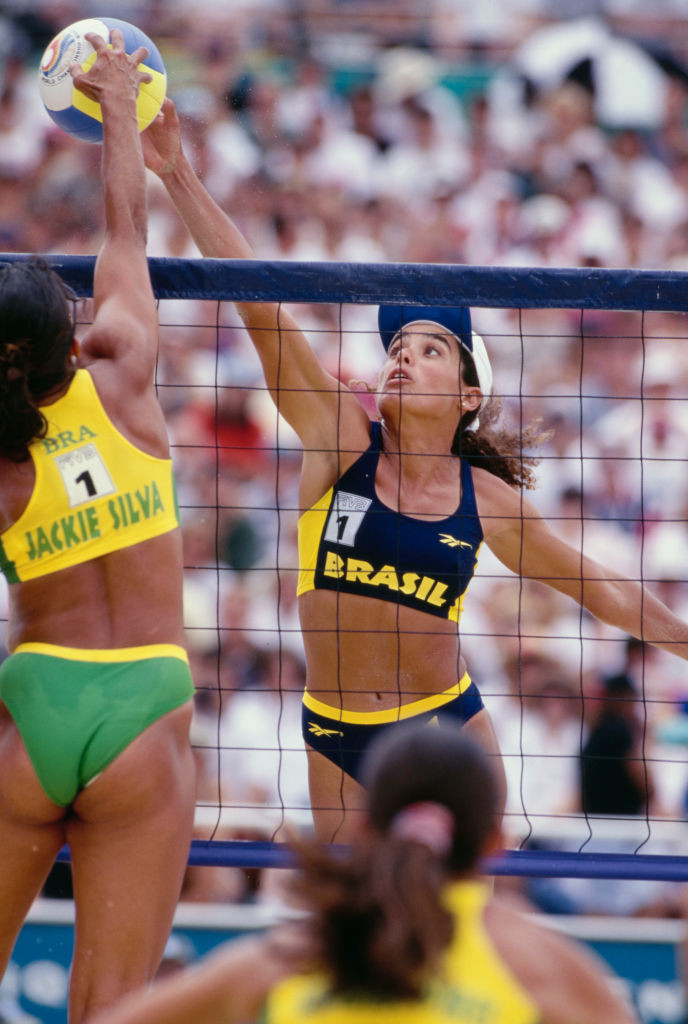 Beach volleyball uniforms at the 1996 Atlanta Olympics showcasing bikini style, worn by female athletes during a sports event
Beach volleyball uniforms at the 1996 Atlanta Olympics showcasing bikini style, worn by female athletes during a sports event
Women’s beach volleyball uniforms at the 1996 Atlanta Olympics. Getty Images
Even weather variations haven’t fundamentally changed the uniform approach. Misty May-Treanor recounted how rain during the 2008 Games reinforced the practicality of swimwear-style uniforms: “This is just another reason why we play in bathing suits.”
Expanding Uniform Options in Beach Volleyball
Today, the landscape of women’s Beach Volleyball Uniforms is more diverse than its early bikini-centric days. While two-piece uniforms remain an option, female athletes can also choose one-pieces and short-sleeve tops. Recognizing varied needs, full-length leggings and long-sleeve tops are permitted for colder conditions or due to religious or personal preferences. Furthermore, athletes have a choice of two different lengths for shorts.
 Doaa Elghobashy of Egypt competing in beach volleyball at the 2016 Rio Olympics, wearing a hijab and modest sportswear, highlighting diversity in sports uniforms
Doaa Elghobashy of Egypt competing in beach volleyball at the 2016 Rio Olympics, wearing a hijab and modest sportswear, highlighting diversity in sports uniforms
Doaa Elghobashy of Egypt plays beach volleyball at the 2016 Rio Olympics. Getty Images
The expansion of uniform options came ahead of the 2012 London Olympics. The Fédération Internationale de Volleyball (FIVB), the sport’s governing body, broadened the regulations to encourage greater global participation. Richard Baker, an FIVB spokesman, explained to the Associated Press in 2012: “Many of these countries have religious and cultural requirements, so the uniform needed to be more flexible.” This change aimed to make beach volleyball more inclusive and accessible to athletes from various cultural backgrounds.
Men’s beach volleyball uniforms typically consist of tank tops and shorts, often resembling board shorts. In many non-Olympic beach volleyball settings, men frequently play shirtless. Similar to women’s options, long-sleeve tops and leggings are available for men when temperatures drop. Hats and sunglasses are permitted for all players, offering sun protection and enhanced visibility.
 Men's beach volleyball uniform at the 2000 Sydney Olympics, featuring tank tops and shorts, worn by male athletes in a sports competition
Men's beach volleyball uniform at the 2000 Sydney Olympics, featuring tank tops and shorts, worn by male athletes in a sports competition
Men’s beach volleyball uniforms at the 2000 Sydney Olympics. Bongarts/Getty Images
Understanding Beach Volleyball Uniform Guidelines
The FIVB has established specific measurements for beach volleyball uniforms to ensure consistency and functionality. For instance, bikini bottoms cannot exceed a 2.8-inch waistband, and men’s shorts must be no longer than 3.9 inches above the knee.
A “close fit” is a general requirement for all uniforms mandated by the FIVB. Jennifer Kessy, a retired Olympic beach volleyball player, clarified the practical reasons behind this in a 2021 interview with Today: “Our suits need to fit just right so they don’t move places we don’t want them to move. A tailored fit is key.” This close fit is essential for athletes’ comfort and performance during dynamic movements.
Specific design elements are also regulated. Women’s briefs should have “an upward angle towards the top of the leg,” while one-pieces “must closely fit and the design must be with open back and upper chest.” Knee-length pants are suggested to be around 18.5 inches in total length and 1.2 inches above the knee. Full-length pants should measure approximately 35 inches long.
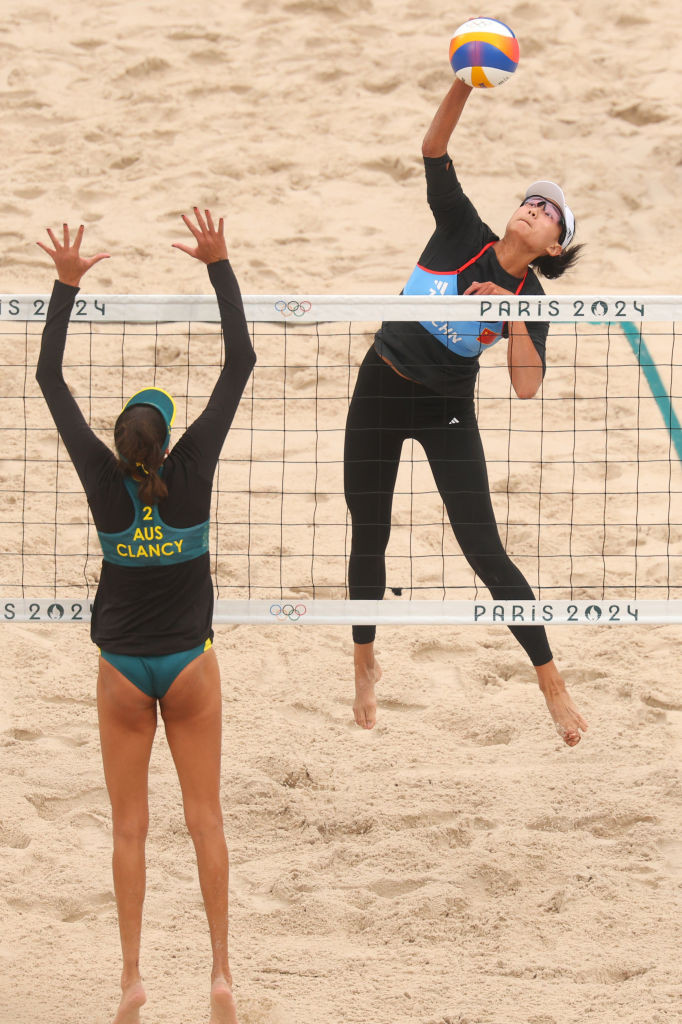 Alternative women's beach volleyball uniforms at the 2024 Paris Olympics, showcasing one-piece and short options, worn by female athletes in a sports event
Alternative women's beach volleyball uniforms at the 2024 Paris Olympics, showcasing one-piece and short options, worn by female athletes in a sports event
Alternative examples of women’s beach volleyball uniforms at the 2024 Paris Olympics. Getty Images
Team uniformity is also key, with teammates required to wear matching uniforms. Logo and text sizes on uniforms are also governed by specific guidelines. Failure to adhere to the FIVB’s uniform regulations can lead to penalties, including fines and potential disqualification.
The Enduring Appeal of Bikinis in Beach Volleyball
Despite the expanded options, many beach volleyball players still favor bikinis for practical reasons directly related to the game. Two-piece uniforms help prevent sand from becoming trapped inside the clothing, which can be a significant distraction during play. Jennifer Kessy pointed out this key advantage, explaining why she prefers bikinis over one-pieces.
Kessy described her experience with one-pieces to Today: “It was restricting and limited my movements — imagine diving chest first and lodging more sand than you care to think down the front of your suit. You can’t keep it in there and it is not easy to get out. I found myself adjusting my one-piece all the time and while it was embarrassing, sure, it also took my focus off the match I was playing.” This illustrates the functional benefit of bikinis in minimizing sand intrusion.
However, athletes like Doaa Elghobashy of Egypt demonstrate that performance is possible and preferences vary. Elghobashy chooses to compete in more modest attire, including a hijab. She told the AP in 2016, “I have worn the hijab for 10 years. It doesn’t keep me away from the things I love to do, and beach volleyball is one of them.” This highlights the successful integration of diverse uniform choices within professional beach volleyball.
Paris Olympics 2024 Celebrity Looks, Live Updates: Sophie, Duchess of Edinburgh, John Travolta & More [PHOTOS]
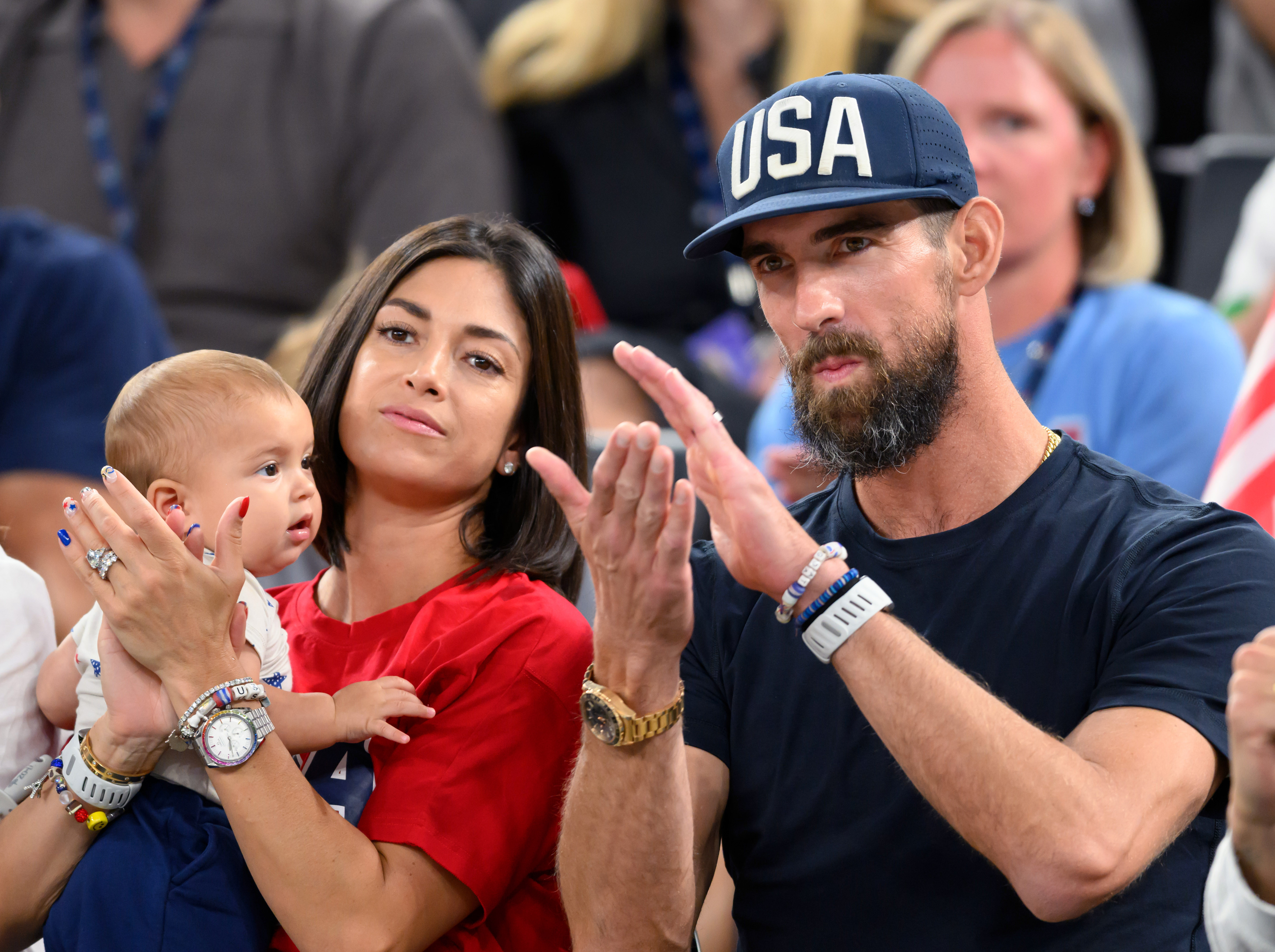 Celebrities at Paris Olympics 2024, Nico Phelps, Nicole Phelps, Michael Phelps attending women's event, showcasing audience support for athletes
Celebrities at Paris Olympics 2024, Nico Phelps, Nicole Phelps, Michael Phelps attending women's event, showcasing audience support for athletes
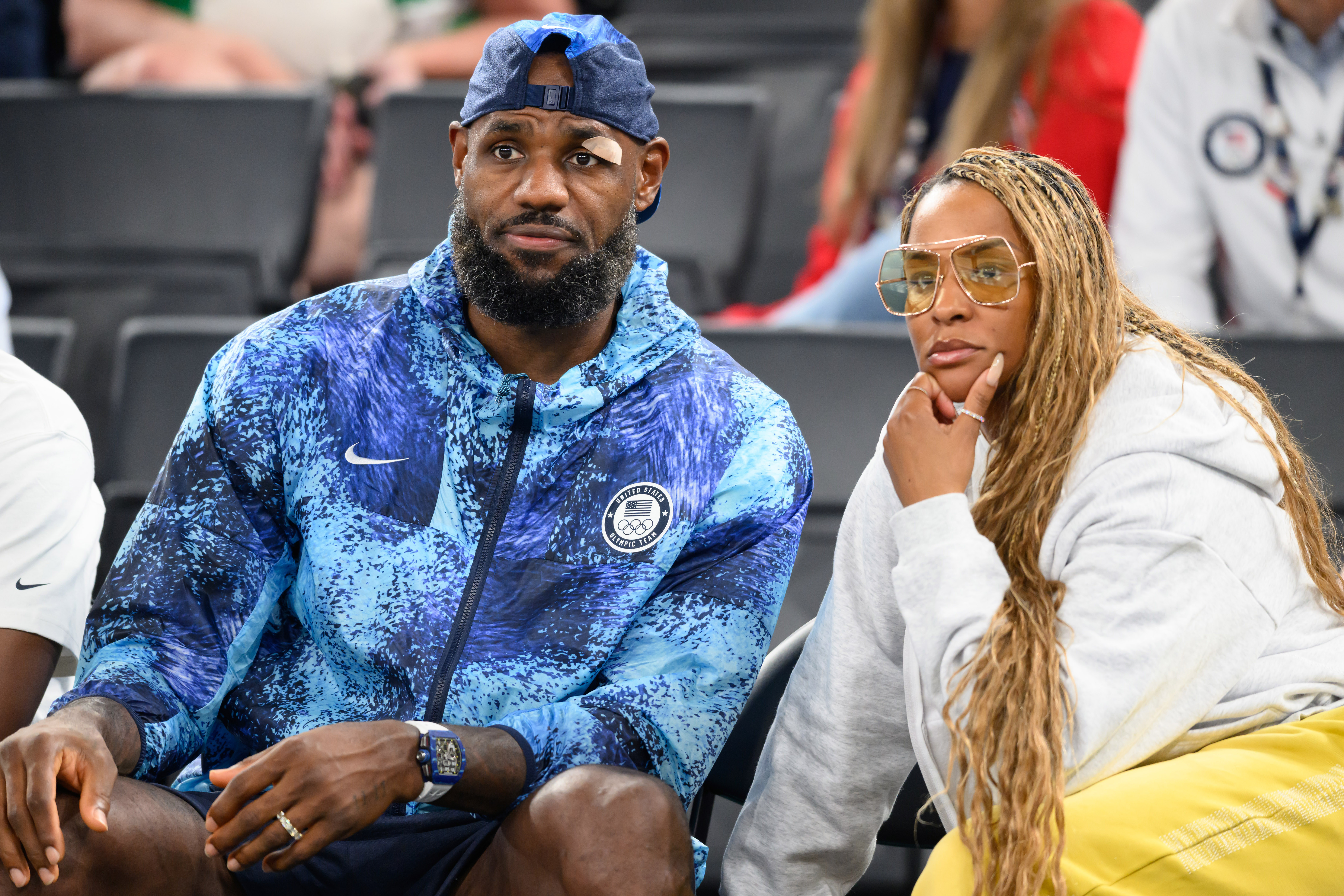 Celebrities at Paris Olympics 2024, Lebron James and Savannah James attending women's event, highlighting celebrity engagement with Olympic sports
Celebrities at Paris Olympics 2024, Lebron James and Savannah James attending women's event, highlighting celebrity engagement with Olympic sports
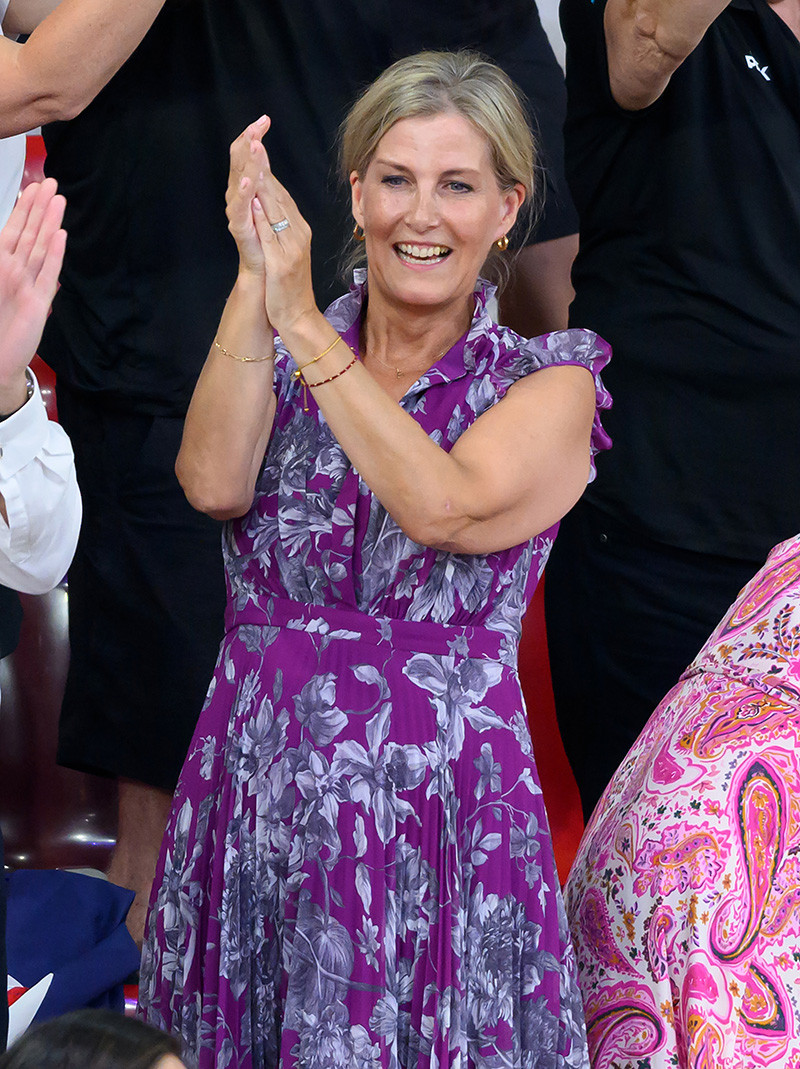 Celebrities at Paris Olympics 2024, Sophie Duchess of Edinburgh celebrating Team GB gold, capturing moments of royal enthusiasm for Olympic achievements
Celebrities at Paris Olympics 2024, Sophie Duchess of Edinburgh celebrating Team GB gold, capturing moments of royal enthusiasm for Olympic achievements
View Gallery
